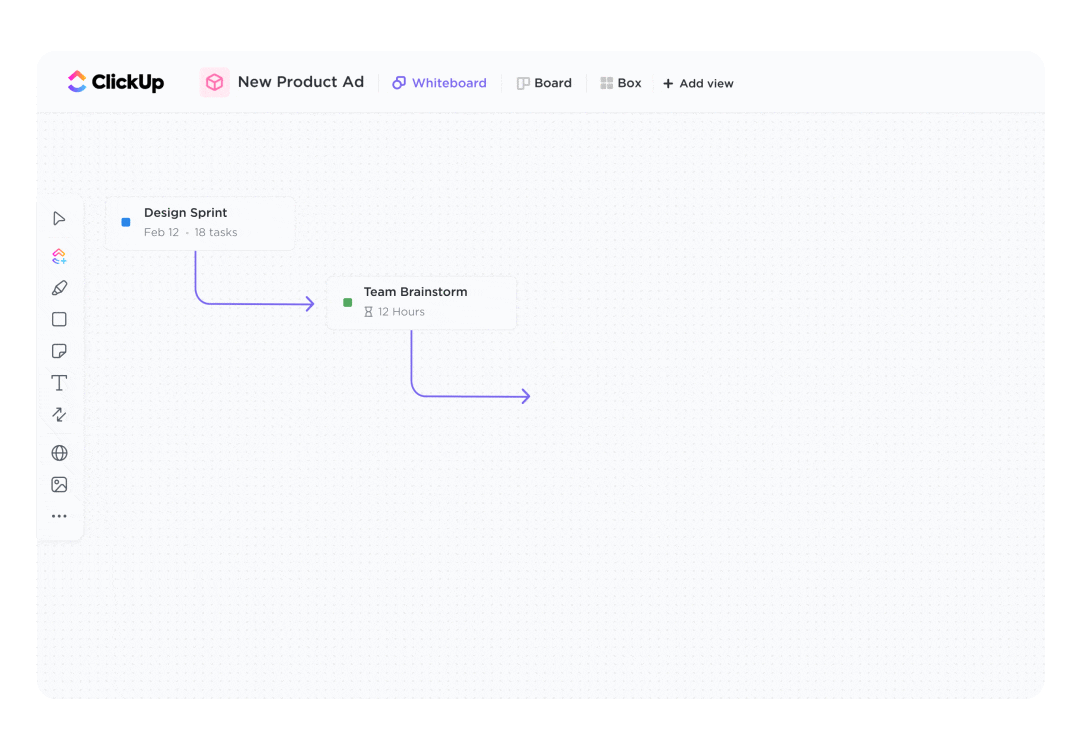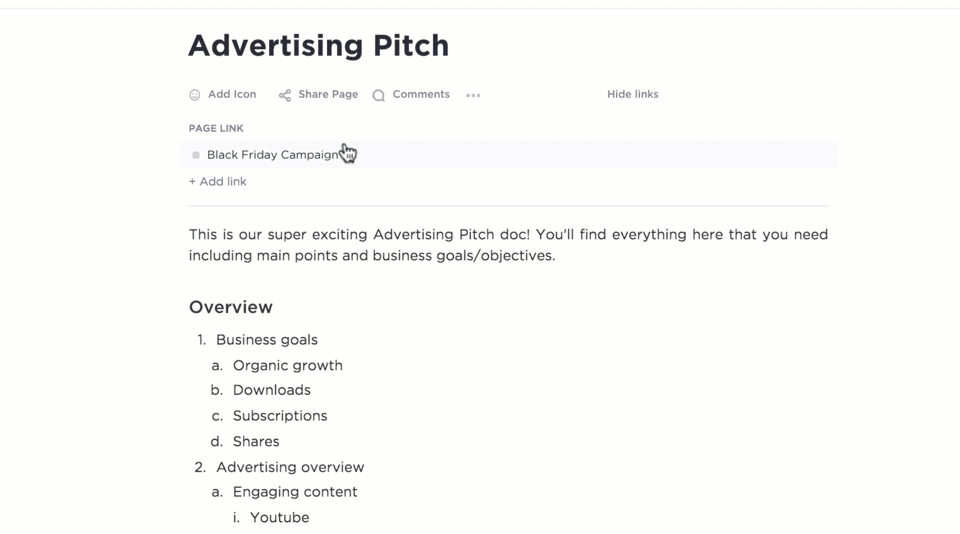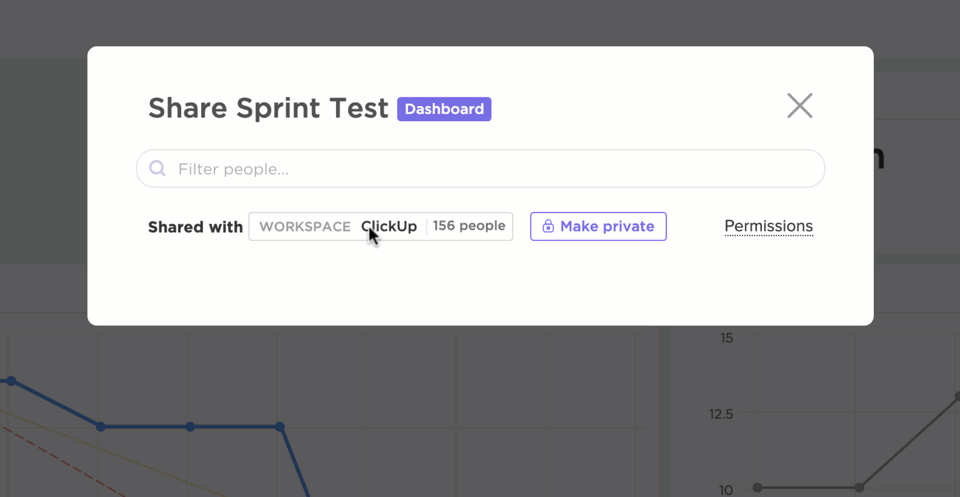هل تساءلت يومًا ما الذي يتطلبه إحياء فكرة ما؟ المنتج عملية التطوير يغطي الخطوات التي تنقلك من الفكرة إلى السوق.
وهو يعمل كإطار عمل يجعلك تمر بمراحل التكرار والاختبار والتفكير حتى لا تضيع في الأعشاب الضارة.
في هذا الدليل، سنستكشف أهميته في دفع عجلة نجاح الأعمال، وسنتعمق في الاختلافات بين تطوير المنتج وإدارة المنتج، وسنقدم لك فهماً متعمقاً للعملية بأكملها.
لنبدأ بتعريف، هلا بدأنا؟
لماذا تعتبر عملية تطوير المنتج مهمة؟
تطوير المنتج هو عملية إنشاء أو تصميم أو تحسين المنتجات التي تلبي احتياجات العملاء وتوقعاتهم. إنها تقنية بالغة الأهمية لأي عمل تجاري لأنها تتضمن عدة مكونات رئيسية مثل أبحاث السوق، وتوليد الأفكار، وتطوير المفهوم، والتصميم، والاختبار، والإنتاج، والتقييم بعد الإطلاق.
يلعب تطوير المنتجات دورًا حيويًا في نجاح الشركة من خلال تعزيز الابتكار، والحفاظ على الميزة التنافسية، وفي نهاية المطاف دفع نمو الإيرادات.
ما الفرق بين تطوير المنتجات وإدارة المنتجات؟
بينما يشير تطوير المنتج إلى إنشاء المنتج الفعلي, إدارة المنتج مسؤولة عن توجيه استراتيجية المنتج وخارطة الطريق والميزات طوال دورة تطوير المنتج.
مطورو المنتجات هم العقول المبدعة التي تقف وراء فكرة المنتج وتصميمه، مما يضمن توافقه مع احتياجات العملاء وتوقعاتهم. 🚀
من ناحية أخرى، يشرف مديرو المنتجات على عملية التطوير الشاملة واستراتيجية المنتج وتحديد موقعه وربحيته. يعمل الدوران جنبًا إلى جنب للتأكد من أن عملية تطوير المنتج بأكملها تتسم بالكفاءة وأن المنتج بشكل عام مصمم بشكل جيد وجاهز للسوق.
إدارة المنتجات والخدمات من خلال هذه الأدوار
_/مرجع/ https://clickup.com/blog/price-list-template// قوالب قائمة الأسعار %/%href/_
!
كيفية بناء عملية تطوير المنتج في 6 خطوات ## كيفية بناء عملية تطوير المنتج في 6 خطوات
إن أسهل طريقة للتعامل مع عملية تطوير المنتج هي تقسيم الرحلة إلى خطوات، والتي تعمل مثل خارطة طريق المنتج نوعاً ما فهم استراتيجيتك التسويقية لمنتجك النهائي أو عملية التطوير ( إن أمكن-عملية التصنيع الخاصة بك ق) أمر بالغ الأهمية لتحقيق إطلاق منتج ناجح.
بشكل أساسي، أنت تريد تحليل عملية معقدة إلى خارطة طريق وظيفية للمنتج يمكن لفريقك بأكمله أن يدعمها. لذا، لنبدأ بالمرحلة الأولى من عملية تطوير المنتج:
المرحلة 1: توليد الفكرة
ابدأ عملية تطوير منتجك ببعض الأفكار الإبداعية تقنيات العصف الذهني مثل الجلسات الجماعية ورسم الخرائط الذهنية وطريقة SCAMPER.
خذ على سبيل المثال جلسات العصف الذهني الإبداعي. تعمل تقنيات مثل رسم الخرائط الذهنية وجلسات العصف الذهني الجماعية وطريقة SCAMPER على تحفيز التفكير الابتكاري. يساعدك رسم الخرائط الذهنية على تنظيم المعلومات بصريًا، مما يسهل عليك تحديد أفكار المنتجات المحتملة.

ارسم الروابط واربط العناصر معًا لإنشاء خرائط طريق أو سير عمل من أفكارك مع فريقك في ClickUp Whiteboards
من ناحية أخرى، تمزج جلسات العصف الذهني الجماعية بين وجهات النظر المتنوعة معًا، مما يزيد من فرص توليد أفكار فريدة من نوعها. تشجعك طريقة SCAMPER (استبدال، دمج، تكييف، تعديل، وضع لاستخدام آخر، إزالة، عكس) على إعادة التفكير في المنتجات الحالية أو مفهوم منتج جديد من زوايا مختلفة.
يتضمن جزء أساسي من توليد الأفكار إجراء أبحاث السوق الخاصة بك. ويشمل ذلك تحليل المنافسين وإيجاد السوق المستهدف. احرص على دراسة عروض منتجات المنافسين لتحديد نقاط القوة والضعف، والتعلم من نجاحاتهم وإخفاقاتهم، وإيجاد مصدر إلهام لمنتجك النهائي.
على سبيل المثال، إذا لاحظت أن منتج أحد المنافسين يفتقر إلى بعض الميزات التي يرغب فيها عملاؤك المستهدفون، فربما يجب عليك التفكير في دمج هذه الميزات في عملية تطوير منتجك. برز جهاز آيفون من شركة آبل كمنتج رائد لأنه جمع بين الهاتف المحمول والمنتجات الموجودة مثل الآيبود. فقد وجدت عملية تطوير منتجاتها السوق المستهدف وعالجت احتياجات عملائها بجهاز واحد.
ضع في اعتبارك أن الأمر لا يتعلق دائمًا بسد فجوة في السوق، ولكن أيضًا الجمع بين عناصر لم يتم دمجها من قبل. يساعد إجراء أبحاث السوق أيضًا في تحديد الثغرات والفرص في السوق. تبدأ عملية تطوير المنتج باستخدام البرنامج المناسب.

مثال على المنطق الشرطي في نماذج النقر فوق نماذج ملاحظات المنتج
أدوات مثل الاستبيانات النماذج ذات المنطق الشرطي ومجموعات التركيز والمقابلات تساعدك على جمع التعليقات الأولية والرؤى القيمة من السوق المستهدف. وهذا أمر رائع لبداية عملية تطوير منتجك.
فمن خلال فهم احتياجاتهم وتفضيلاتهم ونقاط الألم التي لم تتم تلبيتها، يمكنك إنشاء أساس متين لتطوير منتج يتناسب مع احتياجات ورغبات العميل المستهدف.
المرحلة 2: تطوير المفهوم والتقييم
بعد إنشاء فكرة منتج واعد ، فقد حان الوقت لتحديد متطلبات منتجك. تطوير مستندات متطلبات المنتج (PRD) التي تصف بدقة ميزات المنتج ومواصفاته ووظائفه.
على سبيل المثال، إذا كنت تصمم ساعة ذكية جديدة، فقد تتضمن وثيقة متطلبات المنتج تفاصيل حول عمر البطارية ومقاومة الماء والتوافق مع أنواع مختلفة من الهواتف الذكية وأنواع المستشعرات المدمجة في الجهاز. ويضمن إنشاء وثيقة علاقات عامة أن يتشارك جميع أصحاب المصلحة فهماً واضحاً لغرض المنتج وخصائصه - بغض النظر عما إذا كنت تبدأ منتجاً جديداً أو تعمل على منتجات موجودة.

باستخدام علاقات ClickUp، من السهل ربط المهام والمستندات من مساحة العمل لتخطيط أسرع لتطوير المنتج
بعد ذلك، قم بتقييم جدوى المشروع من خلال إجراء تحليل تقني ومالي وتشغيلي للأعمال. يتضمن التحليل التقني تقييم ما إذا كانت التكنولوجيا والموارد اللازمة متوفرة لإنشاء المنتج. يحدد التحليل المالي تكلفة التطوير والعائد المحتمل على الاستثمار.
ويحدد التحليل تحليل الأعمال التشغيلية يستكشف لوجستيات التصنيع والتوزيع ودعم المنتج بعد إطلاقه. على سبيل المثال، عندما بدأت تسلا في تطوير سياراتها الكهربائية، كان عليها أن تأخذ في الاعتبار مدى توافر بطاريات أيونات الليثيوم، وتكلفة بناء البنية التحتية للشحن، والخدمات اللوجستية لصيانة السيارات.
من خلال تطوير مفهوم المنتج وتقييمه بعناية، فإنك تضع الأساس لمنتج نهائي عالي الجودة ومضمون وقادر على المنافسة في مجاله. ولكن كل ذلك يعتمد على كيفية تطوير خارطة طريق المنتج للوصول إلى هذا المنتج النهائي. لذا، خلال عملية تطوير مفهوم المنتج ومرحلة التقييم، ضع في اعتبارك خلال عملية تطوير مفهوم المنتج ومرحلة التقييم ما يلي
- وثيقة متطلبات المنتج (PRD) : تطوير مستند شامل يحدد ميزات المنتج ومواصفاته ووظائفه لضمان مشاركة جميع أصحاب المصلحة في فهم واضح للغرض من المنتج.
- التحليل التقني: تقييم مدى توافر التكنولوجيا والموارد اللازمة لإنشاء المنتج، وضمان الجدوى التقنية لمفهومك.
- التحليل المالي: تحديد تكلفة التطوير والإنتاج والتسويق، بالإضافة إلى العائد المحتمل على الاستثمار، لضمان أن يكون المنتج النهائي قابلاً للتطبيق من الناحية المالية.
- تحليل الأعمال التشغيلية: استكشاف الخدمات اللوجستية للتصنيع واستراتيجية التوزيع ودعم المنتج بعد إطلاقه لضمان سلاسةالعمليات طوال دورة حياة المنتج.
- تعليقات المستخدمين وأصحاب المصلحة: جمع الرؤى من اختبارات قابلية الاستخدام، ومجموعات التركيز، والتعليقات الأولية، والمقابلات لتحسين تصميم المنتج وميزاته بناءً على تفضيلات السوق المستهدفة وتوقعاته.
- تقييم المخاطر: تحديد المخاطر والتحديات المحتملة في عملية التطوير والتأكد من أن خارطة طريق المنتج قادرة على تجنب هذه المخاطر.
- تحليل السوق: استخدامبرنامج تسويق المنتج لإنشاءاستراتيجية تسويق المنتج لتضمين الاتجاهات واحتياجات العملاء والمشهد التنافسي لضمان أن يكون لمنتجك عرض قيمة قوي ونقطة بيع فريدة.
- الملكية الفكرية: تحقق من أي قضايا محتملة تتعلق بالملكية الفكرية، مثل براءات الاختراع أو العلامات التجارية، لحماية عملية تطوير منتجك فيما يتعلق بالميزات والتعقيدات القانونية.

يتيح ClickUp Docs التنسيق المنسق وأوامر الشرطة المائلة للعمل بكفاءة أكبر إنشاء مستند متطلبات المنتج توثيق عملية تطوير المنتج بالكامل يحتاج فريق تطوير المنتج الخاص بك إلى التوثيق الصحيح و برنامج مجاني لإدارة المشاريع لتسجيل عملية تطوير منتجك وتتبعها وإعادة تقييمها ووضع الخطوط العريضة لها. استخدام مستندات ClickUp يتيح لك إرفاق المهام، وإضافة أصحاب المصلحة أو المراقبين، وتعيين التعليقات لمساعدتك في نقل مفهوم المنتج إلى إطلاق ناجح في السوق.
المرحلة 3: تصميم وتطوير النموذج الأولي
حان الوقت لإنشاء نموذج أولي!
بعبارة أخرى، ستحتاج إلى إنشاء تمثيل ملموس لأفكار منتجك. قد يطلق عليه البعض اسم الحد الأدنى من منتجك القابل للتطبيق (MVP) اعتمادًا على مجال عملك.
النموذج الأولي يسهل عليك رؤية واختبار وصقل منتجك تصميم المنتج . يمكنك دمج اختبار ملاحظات المستخدمين وأصحاب المصلحة، ومن الأسهل تحديد الأخطاء أو الثغرات في عملية تطوير المنتج. أثناء مرحلة وضع النماذج الأولية، ضع في اعتبارك ما يلي:
- نوع النموذج الأولي: اختر النوع الأنسب من النماذج الأولية لمنتجك، مثل رسم تخطيطي أو نموذج ثلاثي الأبعاد أو نموذج أولي وظيفي، اعتمادًا على مستوى التفاصيل والوظائف المطلوبة للاختبار.
- تقنيات النماذج الأولية السريعة: استخدم تقنيات النماذج الأولية السريعة، مثل الطباعة ثلاثية الأبعاد أو التصنيع باستخدام الحاسب الآلي لإنتاج نماذج أولية مادية بسرعة للاختبار والتنقيح.
- اختبار المستخدم: إجراء اختبارات قابلية الاستخدام، مثل الاختبار القائم على المهام أو التقييمات الاستدلالية، لجمع الملاحظات حول وظائف النموذج الأولي وتصميمه وسهولة استخدامه.
- التصميم التكراري: قم بتنقيح النموذج الأولي بناءً على ملاحظات المستخدم والمتطلبات الفنية وقيود التصنيع في استراتيجية التسويق الخاصة بك.
- المواد وعملية التصنيع: قم بتقييم المواد وعمليات التصنيع المطلوبة لإنتاج المنتج النهائي، خاصةً إذا كان منتجاً مادياً، مع مراعاة عوامل مثل التكلفة والمتانة والاستدامة.
- حماية الملكية الفكرية: تأمين الحماية اللازمة للملكية الفكرية، مثل براءات الاختراع أو العلامات التجارية، للميزات والتصميم الفريد للمنتج. لا تغفل العناصر القانونية لإنشاء منتجك - فهي لا تقل أهمية عن المنتج نفسه.
- التوثيق الهندسي والتصميم: قم بإنشاء رسومات هندسية مفصّلة ونماذج التصميم بمساعدة الحاسوب ووثائق التصميم لضمان الانتقال السلس من النموذج الأولي إلىالإنتاج على نطاق واسع.
- الامتثال التنظيمي: ضع في اعتبارك أي متطلبات وشهادات تنظيمية سارية، مثل معايير السلامة أو اللوائح البيئية، للتأكد من أن الحد الأدنى من المنتج القابل للتطبيق يتوافق مع القوانين والمعايير الصناعية ذات الصلة.
استخدم نموذج ClickUp هذا لتخطيط وإدارة الامتثال، بما في ذلك تقييم المتطلبات وقياس التقدم المحرز والإجراءات التصحيحية
حافظ على الامتثال وتعامل بثقة مع أي مشروع مع قالب خطة مشروع ClickUp للامتثال . يمكنك بسهولة تحديد متطلبات الامتثال وتقييمها وقياسها مع تتبع حالات عدم الامتثال واتخاذ الإجراءات اللازمة لمعالجة أي مشكلات. قم بتبسيط برنامج الامتثال الخاص بك وتخلص من ضغوط إدارة المشروع!
المرحلة 4: الاختبار والتحقق من الصحة
يعد ضمان الجودة والاختبار أمرًا حيويًا لإنشاء منتجات يمكن الاعتماد عليها. للتأكد من أن منتجك يعمل كما هو مخطط له، استخدم طرق اختبار شاملة للعثور على أي عيوب أو مشكلات وإصلاحها قبل أن تتعمق في استراتيجية التسويق الخاصة بك.
يمكنك استخدام طرق اختبار مختلفة مثل اختبار الضغط أو اختبار الأداء أو الاختبار البيئي. على سبيل المثال، إذا كنت تصنع هاتفًا ذكيًا، فإن اختبار الإجهاد يتحقق من متانته في ظل ظروف صعبة، بينما يبحث اختبار الأداء في السرعة وعمر البطارية والميزات الرئيسية الأخرى.
إلى جانب الاختبار التقني، قم بإجراء اختبار قبول المستخدم (UAT) من خلال جعل المستخدمين النهائيين يجربون المنتج للتأكد من أنه يلبي احتياجاتهم. تساعدك ملاحظاتهم على إجراء أي تعديلات مطلوبة قبل الإطلاق.

يتضمن ذلك تزويد فريقك بالأذونات الصحيحة والوصول إلى عملية تطوير المنتج أو اختبارات تطوير المنتج. باستخدام أداة إدارة المشروع الصحيحة، تضمن حصول فريق التطوير لديك على كل ما يحتاجه للنجاح.
وأخيراً، تأكد من أن منتجك آمن وموثوق ويتبع قواعد ومعايير الصناعة. قد يعني هذا تلبية الإرشادات التي وضعتها منظمات مثل إدارة الأغذية والعقاقير أو لجنة الاتصالات الفيدرالية أو المنظمة الدولية لتوحيد المقاييس، اعتمادًا على منتجك ومجال عملك. على سبيل المثال، يجب على صانع الأجهزة الطبية اتباع لوائح إدارة الأغذية والعقاقير والحصول على الموافقة قبل طرح منتجه في السوق.
من خلال اختبار منتجك والتحقق من صلاحيته بعناية، فإنك تبني الثقة مع العملاء، وتقلل من المشكلات المحتملة، وتمهد الطريق لإطلاق منتج ناجح.
المرحلة 5: الإنتاج والإطلاق
تُعد إدارة عملية الإنتاج وسلاسل التوريد بفعالية أمرًا بالغ الأهمية لتسليم منتجك إلى السوق دون تأخير أو تكاليف غير ضرورية. إن بناء علاقات قوية مع الموردين والمصنعين وشركاء الشحن يضمن سير كل شيء بسلاسة.
تطوير حملات تسويقية جذابة للترويج لمنتجك وإثارة الاهتمام. حافظ على رسالة واضحة ومتسقة لعلامتك التجارية، واستخدم منصات التسويق مثل وسائل التواصل الاجتماعي والبريد الإلكتروني ومنشورات المدونات والعلاقات العامة للوصول إلى جمهورك المستهدف.
أنشئ قنوات التوزيع والمبيعات الأكثر ملاءمة لمنتجك ومجال عملك. قد تشمل الخيارات البيع مباشرةً للعملاء عبر متجر إلكتروني، أو الشراكة مع المتاجر الفعلية، أو التعاون مع الموزعين وتجار الجملة.
قم بالترويج لمنتج جديد أو إعادة إطلاق منتج حالي من خلال نموذج قائمة مراجعة إطلاق المنتج من ClickUp
من خلال التركيز على الإنتاج والإطلاق والتوزيع، فإنك تعزز من احتمالية وصول منتجك إلى جمهور أوسع واكتساب قوة البقاء. تحقق من كل خانة من هذه المرحلة بمساعدة قالب قائمة مراجعة إطلاق المنتج ClickUp . وهو يتضمن مخطط جانت، وجدول زمني مرئي رائع، وجميع الأنشطة التي تضمن لك إطلاق منتجك دون عوائق.
المرحلة 6: التقييم والتكرار بعد الإطلاق
لقد أطلقت منتجك. ولكن هذا لا يعني أن الرحلة قد انتهت. بعد إطلاق منتجك، راقب أداءه من خلال تتبع المقاييس أو المؤشرات المهمة أو مؤشرات الأداء الرئيسية لإدارة المنتج .
يساعدك هذا على معرفة مدى نجاح منتجك وأين قد تحتاج إلى إجراء تحسينات. استمع دائمًا إلى ملاحظات المستخدمين وابقَ على اطلاع على اتجاهات السوق حتى يظل منتجك محدّثًا وتنافسيًا ومطلوبًا.
في هذه المرحلة إدارة دورة حياة منتجك أمر أساسي للجميع - بما في ذلك فريق التطوير الخاص بك. وهذا يعني الإشراف على تطوير منتجك من بداية دورة حياة المنتج إلى نهايتها. يتعلق الأمر كله باتخاذ خيارات ذكية بشأن مستقبل منتجك بناءً على مدى نجاحه وما يقوله العملاء وما يحدث في السوق.
أفضل ممارسات عملية تطوير المنتج
على الرغم من عدم وجود مسار واحد مثالي لتطوير المنتج، إلا أن هناك بالتأكيد خطوات إضافية يمكنك اتخاذها لتحقيق أقصى استفادة من خارطة طريق العملية وتقديم كل ما يساعد فريق التطوير لديك. إليك نظرة على بعضها:
1. تشجيع ثقافة الإبداع
تهيئة بيئة تشجع على الإبداع والتجريب والتعلم. سيساعد هذا الأمر فريق تطوير المنتجات لديك على توليد أفكار وحلول رائدة تدفع الابتكار.
2. إعطاء الأولوية للتعاون
التعاون الفعال بين فرق متعددة الوظائف مثل التصميم، والهندسة، والتسويق، والمبيعات، مما يضمن أن يكون نهجك في تطوير المنتج شاملًا.
3. استخدم ملاحظات العملاء طوال العملية
يساعدك إشراك العملاء في عملية تطوير المنتج، بدءًا من توليد الفكرة إلى تقييم ما بعد الإطلاق، على إنشاء منتجات تلقى صدى حقيقيًا لدى جمهورك المستهدف وتلبي احتياجاته.
4. كن قابلاً للتكيف ومرناً
إن القدرة على التكيف مع ظروف السوق المتغيرة وتفضيلات العملاء والتقنيات الجديدة أمر بالغ الأهمية للحفاظ على ميزة تنافسية في تطوير المنتجات. تبنَّ المرونة في عملياتك لتظل مستجيبًا للتغيير.
5. الموازنة بين السرعة والجودة
في حين أنه من الضروري تقديم المنتجات إلى السوق بسرعة، فمن المهم بنفس القدر ضمان جودتها وموثوقيتها. سيؤدي تحقيق التوازن الصحيح بين السرعة والجودة إلى تحقيق النجاح ورضا العملاء على المدى الطويل.
أمثلة على تطوير المنتجات
مثال 1: ليفت
قطعت شركة Lyft، وهي منصة لمشاركة المشاوير، خطوات كبيرة في عملية تطوير المنتج من خلال تحليل احتياجات العملاء وإتقان بنيتها التحتية التكنولوجية. كانت الإصدارات الأولى من تطبيقهم محفوفة بالأخطاء، ولكن مع عملية تطوير المنتج التكرارية، قاموا بتحسين وظائف التطبيق وإصلاح الأخطاء وإضافة ميزات تركز على العملاء. على سبيل المثال، أدرجوا خاصية تقدير الأسعار استجابةً لمخاوف العملاء بشأن شفافية الأسعار، وسرعان ما اعتمدها مستخدمو التطبيق.
مثال 2: كانفا
أحدثت شركة Canva ثورة في تصميم الجرافيك من خلال أداة التصميم البديهية عبر الإنترنت. تضمنت عملية تطوير المنتج في Canva تحديد نقطة ألم واضحة للمستخدمين - برامج التصميم الجرافيكي المعقدة. وقاموا ببناء نموذج أولي بسيط وسهل الاستخدام للمنتج، واختبروه بدقة مع المستخدمين، وكرروه بناءً على التعليقات التي تلقوها. ويسمح لهم التقييم المستمر والتكرار بعد الإطلاق بإضافة قوالب وميزات جديدة وتحسين الخدمة باستمرار. هذا التطور المستمر وفقًا لاحتياجات المستخدم يجعل من Canva مثالاً كلاسيكيًا على عملية تطوير المنتج الناجحة.
نخب عملية تطوير المنتج الناجحة!
لقد قمنا بتغطية خصوصيات وعموميات عملية تطوير المنتج، مع التأكيد على أهمية اتباع نهج منظم وتطبيق أفضل الممارسات. حان الوقت الآن لتطبيق هذه المعرفة على مشاريعك الخاصة، سواء كنت تعمل مع فريق مكون من خمسة أشخاص أو خمسين شخصاً.
تذكر أن تنقيح نهجك، والبقاء على اطلاع دائم باتجاهات الصناعة، والتعاون هي مفاتيح نجاح تطوير المنتج.
ابدأ بتنظيم تطوير منتجك مع انقر فوق .



